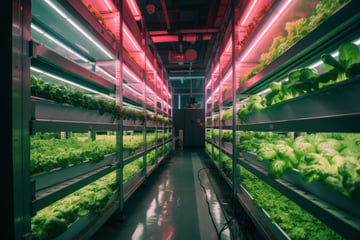The responsibilities of a supply chain leader can seem never-ending. Whether you’re managing compliance documentation, monitoring logistics, or coordinating with suppliers on out-of-stock items, it’s easy to feel overwhelmed.
Since the pandemic, many of the roles and responsibilities that occupied a supply chain leader’s daily routine have become more digital – everything from supplier communication and documentation to traceability data and new supplier onboarding. While these digital enhancements are intended to simplify processes between supply chain partners, it can be challenging to cultivate relationships strictly through digital means. Needless to say, while technological evolution is working to make processes easier, the way that employees and suppliers communicate needs to evolve too.
Luckily, when you cultivate and invest in positive supplier relationships, the benefits can grow to far outweigh the difficulties. And prioritizing positive relationships now can lead to much stronger and more aligned relationships down the line. Whether the benefits are abstract – like reducing stress or negotiating better price points – the takeaway is the same: better supplier relationships are worth it.
Communication: Transparency and a Single Source of Truth
As in any relationship, communication is key. But as communication has shifted to entirely digital channels – email, texts, in-product messaging, and more – keeping track of communication between suppliers has become more challenging.
Yet, a breakdown in communication – whether over a lost email or miscommunicated expectations – can lead to delays, shortages, and even compromise food safety. There are a few best practices we recommend holding to when it comes to supplier communication:
- Centralize Communication: One of the easiest ways for miscommunication to happen in the current day is when messages or emails go missing. And your employees shouldn’t be spending hours tracking down paperwork or managing their inbox. By keeping all communication in one place – such as a centralized supplier management dashboard that can act as a single source of truth – both sides of the aisle can ensure messages, alerts, or concerns aren’t missed.
- Be Transparent: Everyone up and down the line should understand your goals, priorities, quality standards, and expectations. Ensure that your team can communicate where they are experiencing bottlenecks. And if issues persist, be clear with both sides about next steps and resolving conflicts.
- Be Proactive: Don’t wait for a crisis to bring up concerns. Aim for ongoing, honest communication about your suppliers’ capabilities and your plan of action in the event of a supply chain disruption. Check ahead of time if suppliers have disaster plans in place, well-documented recall plans, or alternative solutions for disruptions. And communicate your plans ahead of a crisis, as well.
Onboarding: Aim for Intuitive Workflows
First impressions are still important in a more digital world. And while many businesses may have scrambled to switch to online onboarding in 2020, not having those processes ironed out in 2023 may create a poor impression on future supply chain partners.
While not all onboarding will happen remotely, the simplicity of virtual onboarding – digitally signing and uploading compliance documents, establishing lines of communication, and sharing documents that outline procedures – provides ample benefits for supply chain partners. Additionally, digital onboarding can make the process more intuitive, walking suppliers through each step of the process so nothing is missed.
When establishing your onboarding process, aim for these best practices:
-
Make the process as intuitive and streamlined as possible.
-
Review food safety plans, recall plans, and traceability plans.
-
Track and review completed compliance documents.
-
Establish dedicated points of contact and preferred communication preferences.
-
Share documents that outline procedures, processes, and quality standards.
-
Share your commitment to continuous improvement and collaboration.
Traceability: Are They Ready for FSMA 204?
The FDA’s FSMA 204 enhanced traceability recordkeeping rule is bound to impact many businesses in the food industry as the 2026 compliance date gets closer. If your business handles high-risk foods, like soft cheeses, fresh produce, or nut butters, chances are you will need to establish a FSMA 204-compliant traceability plan. And so will your supply chain partners.
Preparing for FSMA 204 isn’t something that can be completed overnight, so establishing a plan today is paramount to achieve compliance by the FDA’s deadline. Similarly, you will want to know how your partners are preparing for the traceability recordkeeping requirements so you can incorporate that information into your own traceability plan.
Some of the information you will need to collect and align with your partners includes:
-
A point of contact for traceability data and records.
-
Recordkeeping procedures to identify foods on the Food Traceability List (FTL), as well as format and location of records.
-
How traceability lot codes are assigned to foods on the FTL.
-
A farm map showing the areas in which food is grown or raised.
-
Details of how traceability data is collected if using a third-party application.
Continue to Evaluate Compliance, Risks, and Data
Relationships will grow and change over time as regulations, personnel, and supply chain shifts create new opportunities and challenges for each member along the chain. While the steps shared here can help you establish a solid foundation, there is nothing more impactful than harnessing data to support your supply chain decisions.
As your relationships evolve, continue to evaluate your partners’ compliance alignment, how they handle disruptions, how quick they are to respond to errors, and their ability to respond to risks and recalls. Keep these questions top of mind:
- How many days (or hours) does it take for a supplier to respond to a withdrawal or quality issue?
- How quickly does the supplier respond to expired documentation? How many requests does it take to get a response?
- How accurate is the data your supplier is inputting in the system? Are errors common with particular suppliers?
There are many ways to harness data to track, monitor, and manage your supplier relationships. However, your data is only useful if you know how to analyze and review it. In Trustwell’s FoodLogiQ Compliance dashboard, suppliers can easily see a centralized hub for communication, documentation, and access loads of data to make more informed decisions about their supply chain partners. From time to resolution, to data accuracy checks, food businesses can home in on areas of improvement, and be proactive about disruptions or regulations down the line.
To learn more about improving supplier relationships with an intuitive, user-friendly solution like FoodLogiQ Compliance – and how your business can prepare for FSMA 204 – contact our team today.
Tag(s):
Food Industry
,
Supplier Compliance
,
Recall
,
Food Safety
,
Industry Regulations
,
Supplier Management
Other posts you might be interested in
View All Posts
Trustwell News
4 min read
| April 13, 2023
Salad And Go Turns to Trustwell’s FoodLogiQ Solution for Growth, Transparency, and Trust
Read More
Food Industry
8 min read
| June 29, 2023
How to Harness Supplier Data to Improve Food Safety Efforts
Read More
Supplier Compliance
9 min read
| August 24, 2023

